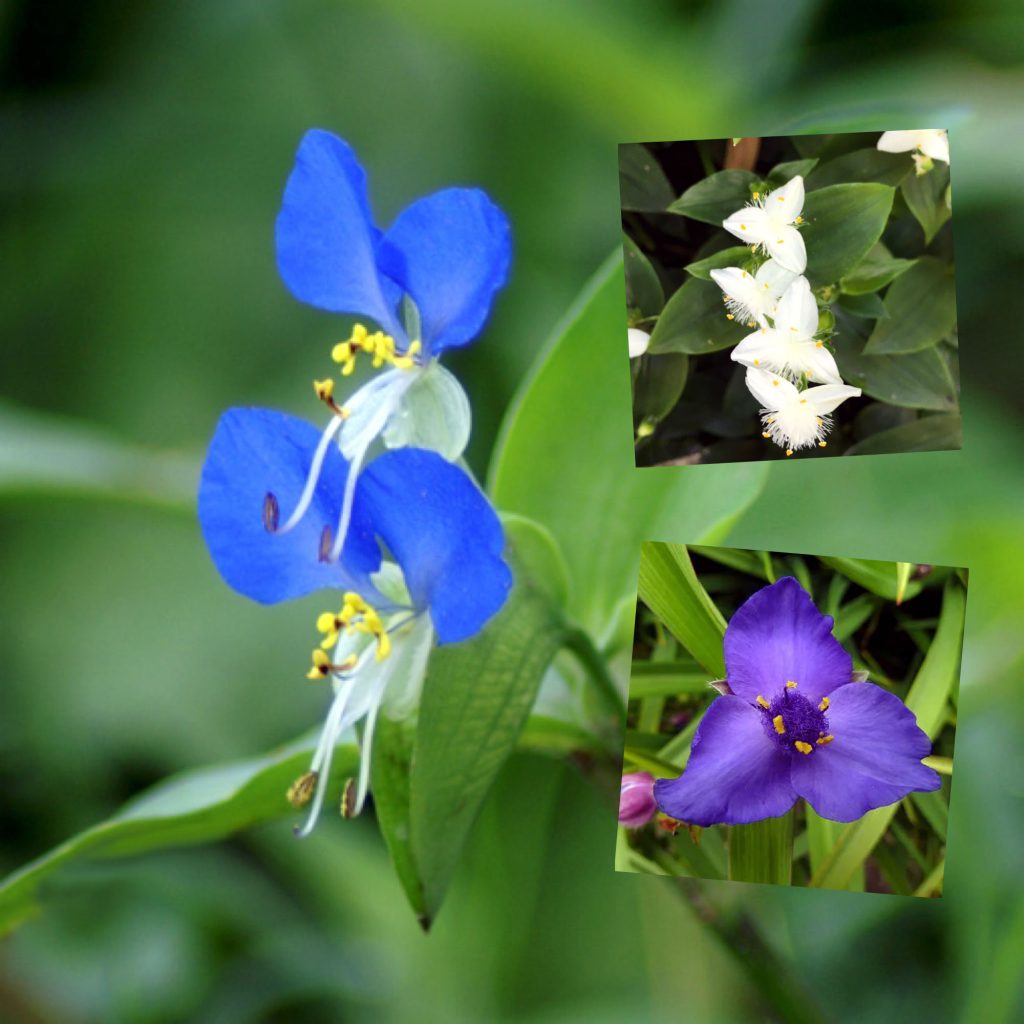
It is not as interesting as hydrangeas (Ajisai) and roses (Bara), but at this time of year, Commelina communis (Tsuyukusa) can be found everywhere, such as in the corners of fields, wetlands, roadsides, and the edges of streams. However, I think that it is becoming less common these days. There is a mountain called Konoyama, which is less than 300m in length, facing the outer ring road in Kishiwada City, Osaka. Just by looking at the name, you can see that it is a mountain with a long history. I often climb this mountain for a walk, but at this time of the rainy season, as shown in the photo, the native species of Commelina communis, which has existed since the Manyo era, and the Commelina communis, which seems to be an exotic species, are mixed and blooming. The exotic species have large petals, the white one is the small-leaf spiderwort, and the purple one is the purple spiderwort. Both exotic species have been introduced to Japan as ornamental plants since the Edo period, but many are now wild.
紫陽花やバラのように特別関心を引くでもなく、この時期になると、畑の隅や湿地、道端、小川の縁など、どこでも見かけることのできたのがツユクサです。しかし最近は見かけることも少なくなってきたようにも思います。大阪岸和田市の少し山手、外環状道路に面した所に神於山(こうのやま)という300m足らずの山があります。名前を見ただけでも由緒のある山だと窺えます。散歩がてらによくこの山に登るのですが、梅雨のこの時期には、写真の様に、万葉の時代からあった在来種のツユクサと、明らかに外来種と思えるツユクサが混ざって咲いています。外来種は花びらが大きく、白いのがトキワツユクサ、紫色のがムラサキツユクサです。どちらの外来種も江戸時代頃から日本に観賞用植物として持ち込まれましたが、今では多くが野生化しています。
